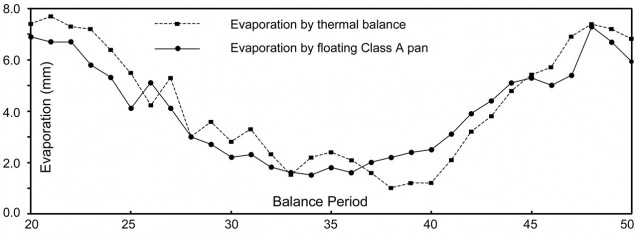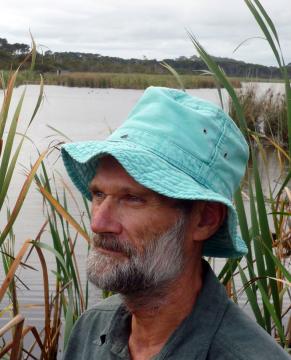Chapter 8: Thermal Balance
A thermal balance relies on the measurement of all sources of incoming and outgoing thermal energy plus changes in energy storage. It is considered to be one of the most accurate methods for estimating evaporation from a water body when integrated over long periods of time. In such studies all thermal terms are measured except evaporation. The residual in the balance is then considered to be the heat used to evaporate water. In many studies however, heat advected in the difficult to measure ground water components (discharge into the lake and recharge from the lake back to the aquifer) are either ignored or poorly estimated. Likewise heat conducted from the lake into the sediments and from the sediments back into the water column has been generally ignored. Heat flux from sediments can comprise a significant source of heat to the water. Reviews of the literature confirmed that the heat flux to and from the sediments had been addressed in only a few studies.
At East Lake evaporation was measured directly by floating pan. Likewise groundwater components were independently measured and their temperature throughout the year well documented. Therefore heat used for evaporation and heat transported via groundwater were known. The thermal contribution of the lake sediments could then be estimated as the balance residual. For the year 1997, total East Lake evaporation (measured by floating Class A pan) was 1378.8mm. Ignoring the sediment term, the thermal balance estimate of evaporation was 1468.4mm, an over estimate of 6.5%. Over a year, much of the error is cancelled because the thermal balance both over and under estimates evaporation however within individual balance periods (typically 12 days) the error was much greater, ranging from 50.9% over estimate (Balance 34) to -53.1% under estimate (Balance 38). Expressed as daily evaporation, the average daily error over 1997 was 0.24mm however within individual balance periods this rose as high as 1.54mm (diagram below).


